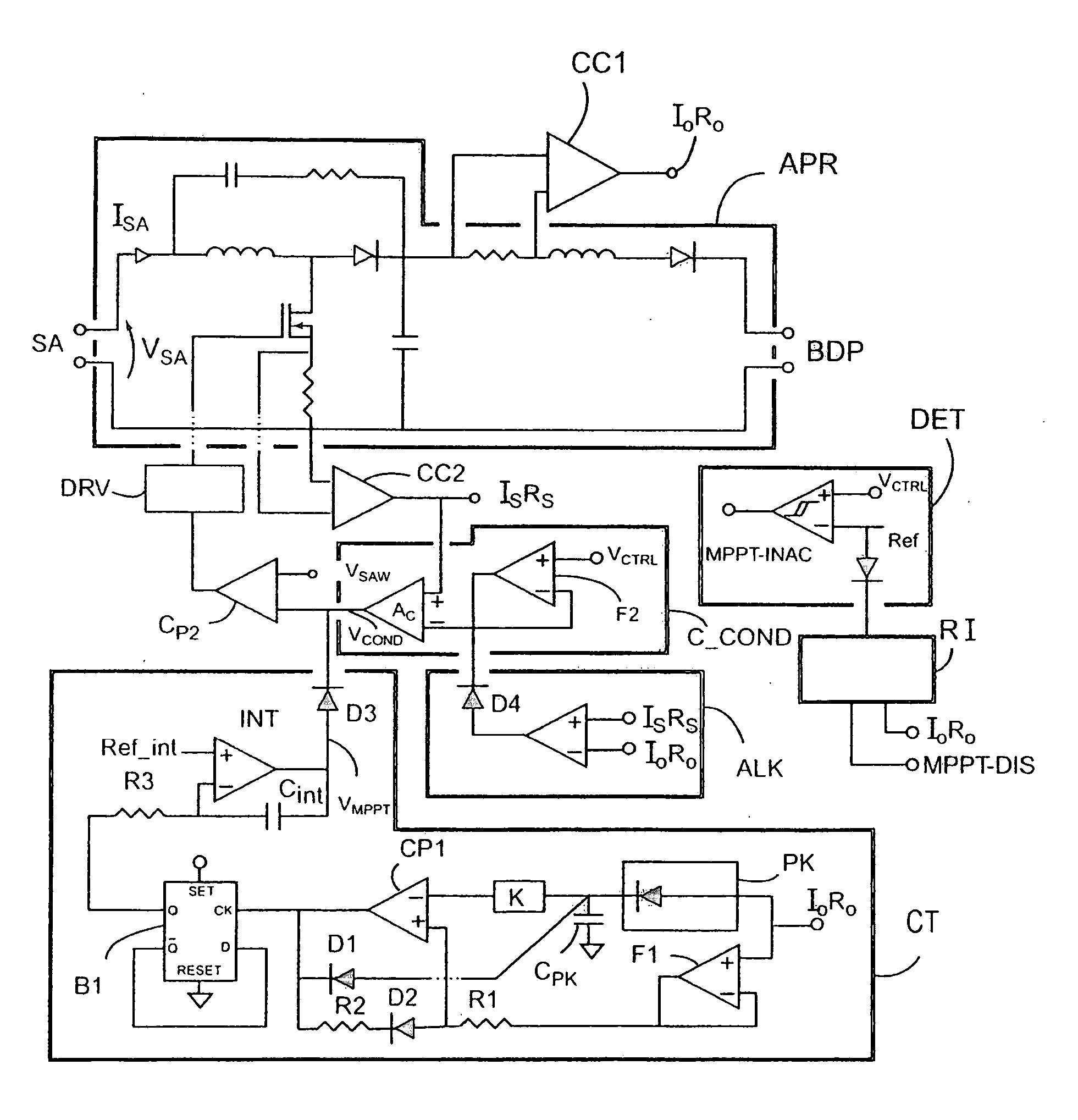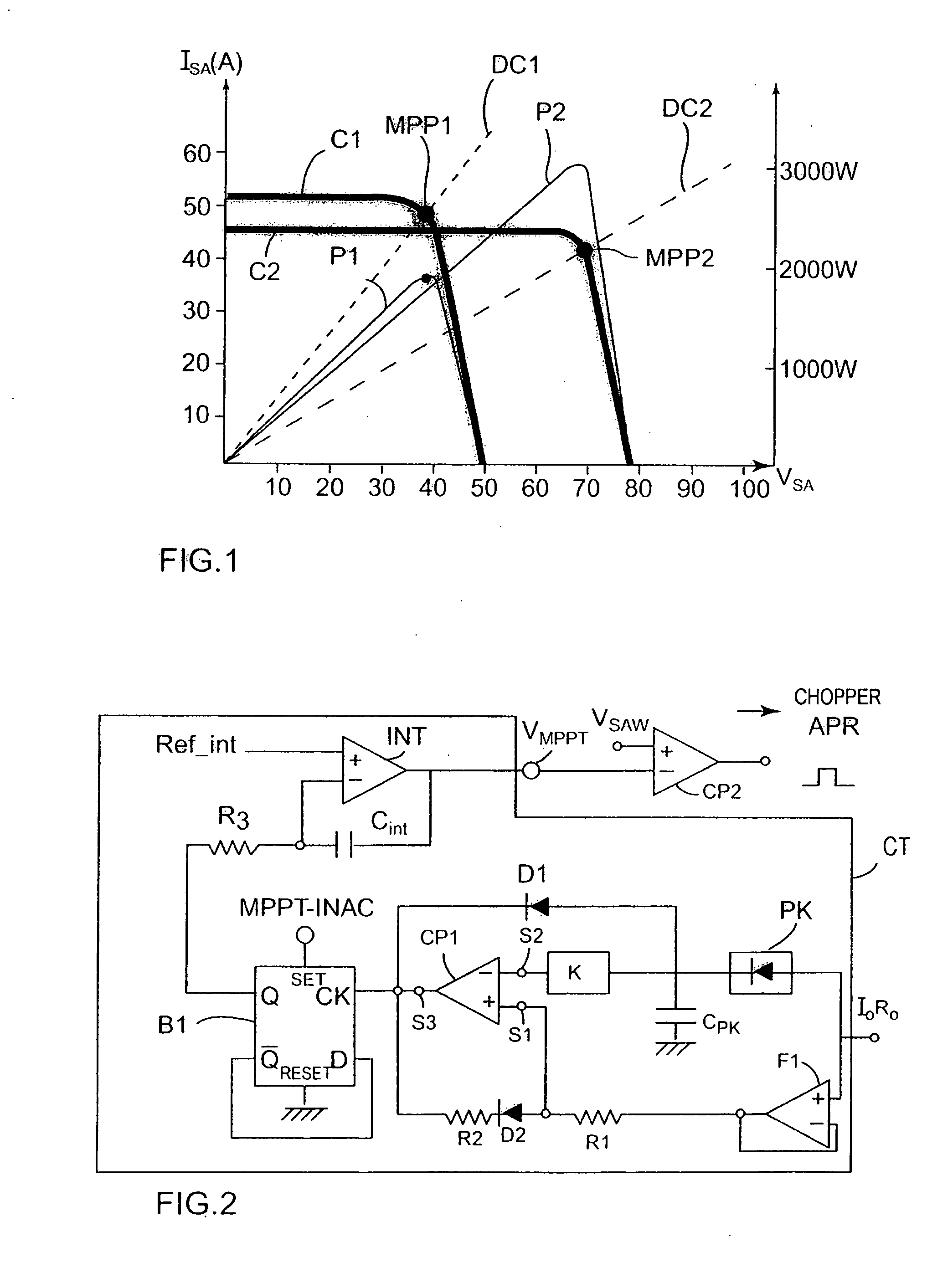Control circuit for a DC-to-DC switching converter, and the use thereof for maximizing the power delivered by a photovoltaic generator
a technology of dc-to-dc switching converter and control circuit, which is applied in the direction of light radiation electric generator, process and machine control, instruments, etc., can solve the problems of complex problems, inability to optimize the use of photovoltaic generator power, and excess power available, so as to improve the reliability and improve the overall effectiveness of the photovoltaic generator system
- Summary
- Abstract
- Description
- Claims
- Application Information
AI Technical Summary
Benefits of technology
Problems solved by technology
Method used
Image
Examples
Embodiment Construction
[0054]FIG. 1 shows examples of characteristic curves for photovoltaic generators. More precisely, the thick-lined curves C1 and C2 represent the relationship between the voltage VSA and the output current I for a generator at respective temperatures of 45° C. and of −90° C. At both temperatures, the characteristic curves present a first region of approximately constant current followed by a second region of approximately constant voltage in which the current drops off rapidly to zero for a small increase in voltage. The power generated is given by the relationship PSA=ISA(VSA)·VSA, and is represented by the fine-lined curves P1 and P2. The optimum operating point MPP1, MPP2 corresponds to generating maximum power and is situated in the region of the inflexion in the characteristic curves C1, C2: it is of interest to observe that these points correspond neither to maximum current nor to maximum voltage. The reciprocals of the slopes of the load lines CT1 and CT2 passing through the o...
PUM
 Login to View More
Login to View More Abstract
Description
Claims
Application Information
 Login to View More
Login to View More - R&D
- Intellectual Property
- Life Sciences
- Materials
- Tech Scout
- Unparalleled Data Quality
- Higher Quality Content
- 60% Fewer Hallucinations
Browse by: Latest US Patents, China's latest patents, Technical Efficacy Thesaurus, Application Domain, Technology Topic, Popular Technical Reports.
© 2025 PatSnap. All rights reserved.Legal|Privacy policy|Modern Slavery Act Transparency Statement|Sitemap|About US| Contact US: help@patsnap.com



